|
|
| Разместил (Author): |
SergUA6  |
| Авторские права |
© http://www.radioscanner.ru |
|
|
Текст
|
*** Previouse part ***
Let's consider another signal. CIS-59(Ferrite)
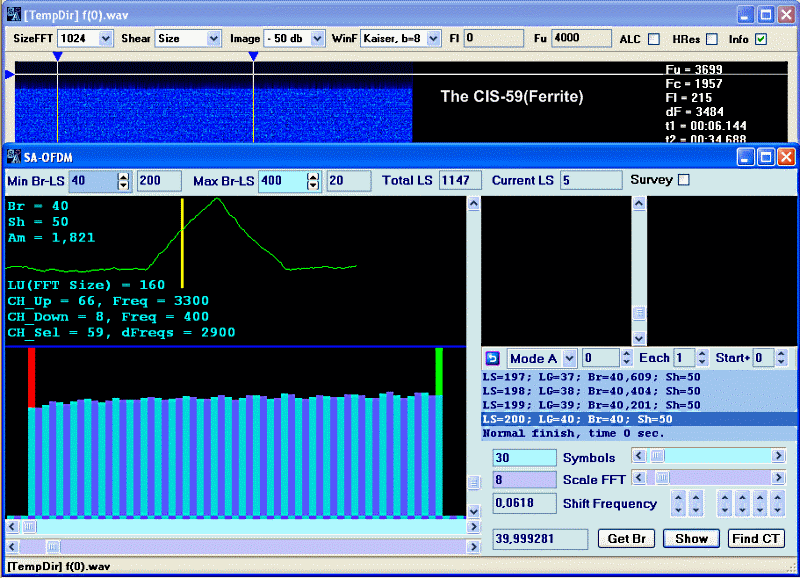
The coefficient k at this signal is equal 0.25. This signal is remarkable by the fact, that the record completely corresponds to exact parameters. It is rather an unusual occurrence, but sometimes such gifts are happen. :)
I pay attention to the very important point:
At the previous signal, k is also equal 0.25 and sampling rate is also equal 8000 Hz, but why this sampling rate is absolutely incorrect for the first signal and absolutely correct for the second?
At formation of OFDM signal, sampling rate sets values of speed of manipulation and spacing of the channels. We considered it in the one of articles, and this is called as sampling rate of formation OFDM. Sampling rate of formation can be any, and fractional including.
It is possible To accept/transfer a signal physically on any sampling rate. Moreover, it is possible to transfer/send at one SR value, and to accept/recieve at other SR value, it is absolutely normal. It is natural, at the condition that quantization at resamplings is occurring correctly, modern devices are quite cope with this task.
On receiving, the correct sampling rate is set by a core of formation OFDM, which we are unambiguously characterizing through coefficient k. We have gotten this correct sampling rate in the first example. In this example, it coincides with initial that tells simply about qualitative record, and correspondence of the declared sampling rate in the record in 8000 Hz to the valid/real sampling rate.
Let's return to the signal.
Any channel without effort is visualized in synchro-symbol. Small regulation of position of the signal on/by frequency is required. The reason all the same – it is not absolutely exact correspondence of the sampling rate, which is necessary to compensate at the channel change/changing.
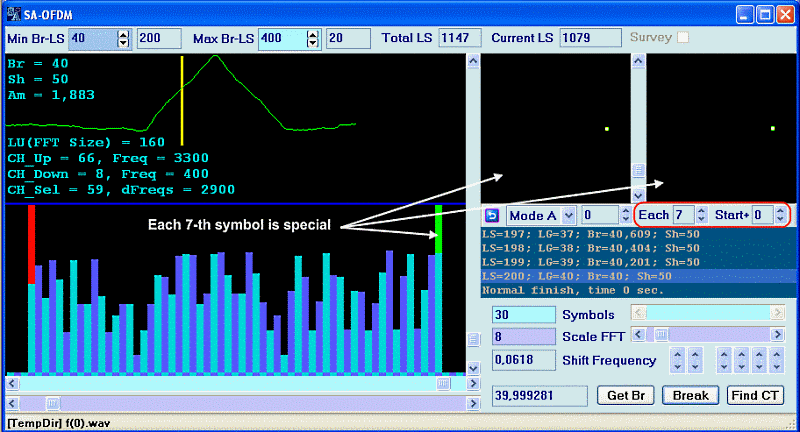
The full constellation of the channel. It is possible only indirectly to define presence of synchro-symbols, in case if there are no special possibilities/tools, it is also problematic enough to see what is exactly in these symbols.
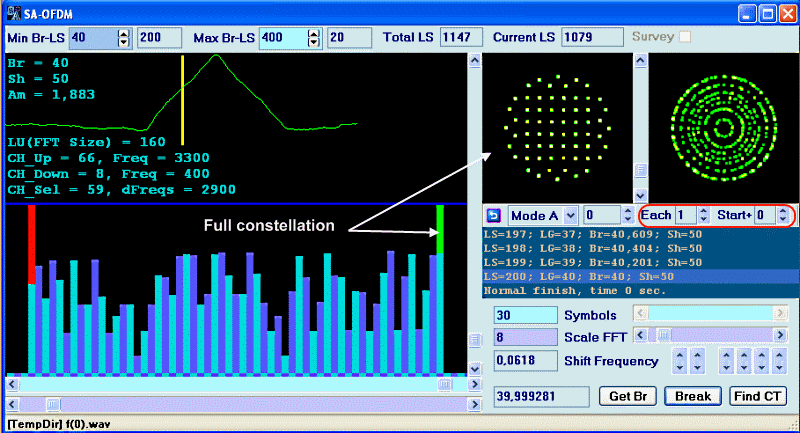
Undoubtedly it is very qualitative record.
***
The following example. The fragment of CIS-79 signal (Tandeme)
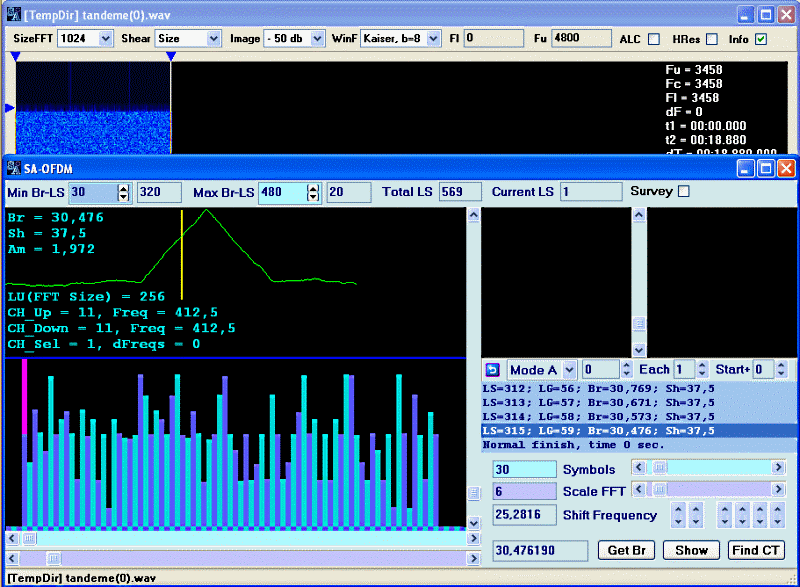
The coefficient k at this signal is equal 0.23046875 or 59/256 and there is unique pair LU and LG, and accordingly there is one sampling rate, on which the signal should be analyzed/demodulated. In this record, sampling rate is completely correct and equal 9600 Hz. We don't consider a harmonic of this frequency 9600*n, where n=2,3,4,5... Etc.
It needless to say, thus LU and LG are proportionally increasing in 2,3,4... Etc times
Specific of this record is that the signal is shifted/displaced downwards, however, as it is not difficult to see, function "Get Br" successfully returns it in very close to the optimal position. The position is very close to optimal it is not exactly optimal! It is necessary to remember it.
It is visible on the spectrum, that every third channel has constant amplitude in the represented symbol. Symbol-by-symbol preview allows to find out that it happens on every third symbol. It is only necessary to see all that :-)
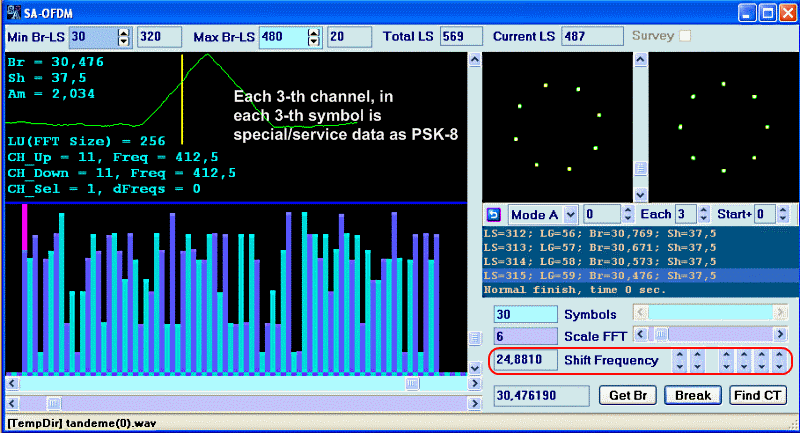
It is necessary to select accurately a direction of correction of shift the signal by frequency, as necessity of the signal shifting downwards is confidently enough defined.
Full constellation of the channel.
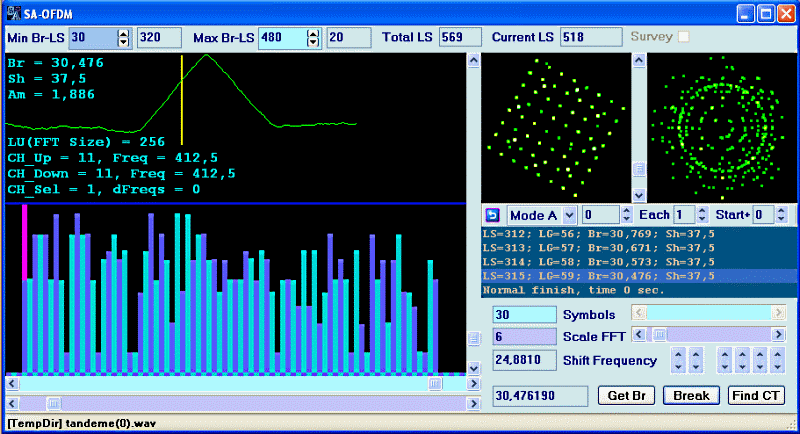
Unfortunately, despite very high quality of the record, the signal has the damaged symbols. It is shown a view of rare chaotic points on constellation. It is SA not problem, it is such record.
***
One more signal. OFDM-59. Earlier we considered it as an example, nevertheless this signal represents certain interest.
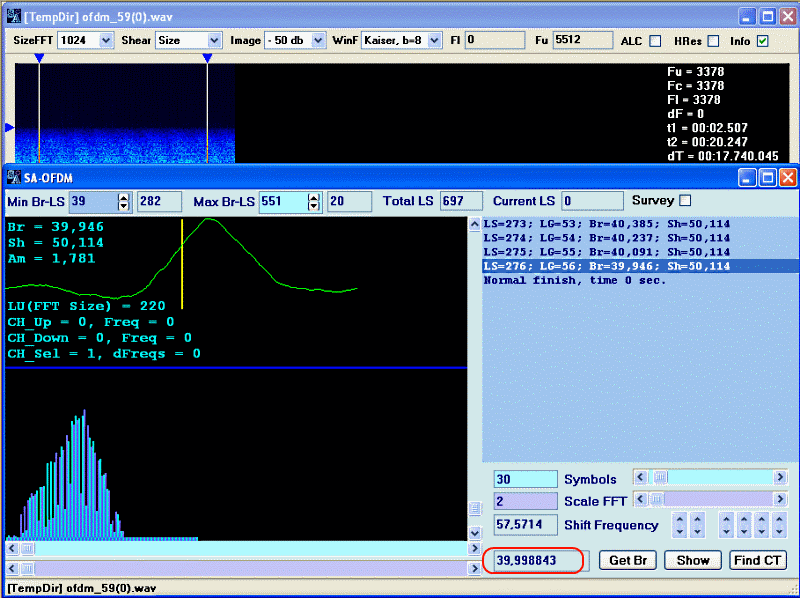
The coefficient k is equal 0.25 and current sampling rate isn't true.
As such coefficient k offers very wide range of correct LU and LG, then also the sampling rate choice as is wide enough. We can leave the same LU which we have now as it is correct.
In OCG we choose correct couple LU-LG of the current signal and getting from it correct sampling rate.
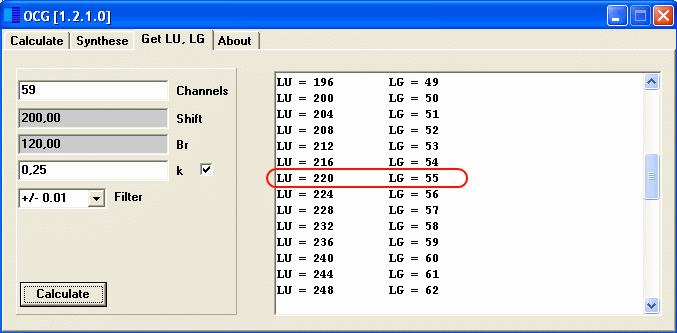
LU = 220, LG = 55, LS = LU+LG = 275. Fd = LS*Br = 275*39.998843 = 10999.71015 Hz, we approximate to 11000 Hz of SR.
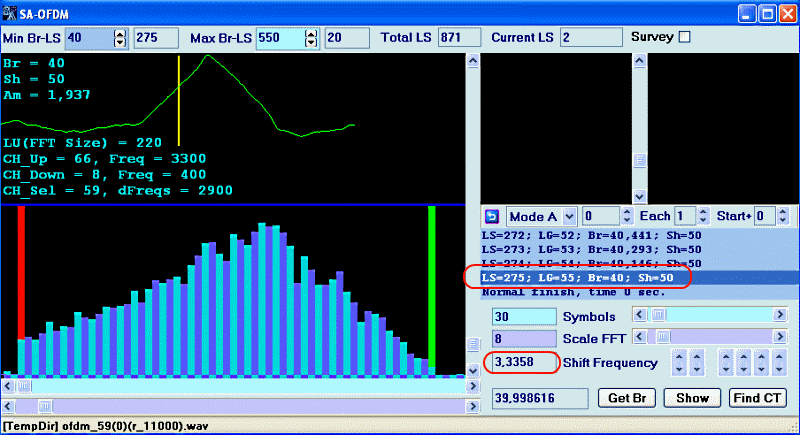
Symbol-by-symbol review of the signal finds out that each 5th character is service. What to do further, we already know from the previous examples.

The full constellation of the channel.

*** Next part ***
|
|
|
|
Добавлять комментарии могут только зарегистрированные, активировавшие регистрацию и не ограниченные в доступе участники сайта!
|
| Файл создан: 23 Mar 2011 22:25, посл. исправление: 23 Mar 2011 22:39 |
|

